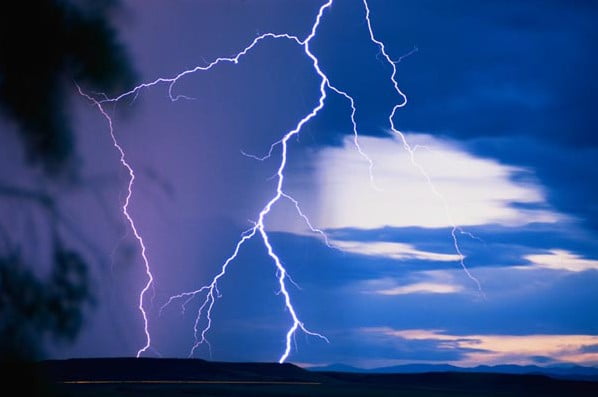Calculation: Trees as Air Conditioners
Learning objectives: to apply the equations
energy for a change of state = mass × specific latent heat
energy transferred = power × time
to a real world situation.
When water evaporates from the leaves of trees, is it called evapotranspiration. The latent heat required for this comes from the thermal store of energy in the surroundings. This question compares the cooling power of evapotranspiration from an oak tree to air conditioning.
- An oak tree can lose up to 400 kg of water through evaporation from its leaves in one day (24 hours). Assuming that the energy for evaporation comes from the tree’s surroundings, calculate the average cooling power of the tree. The specific latent heat of vaporisation of water is 2700 kJ/kg.
energy for a change of state = mass × specific latent heat
400 kg * 2700 kJ/kg
power = energy transferred / time
time = 24*3600
power = 10 kW
- An air conditioning unit has a power of 2.5 kW. How many air conditioning units would be required to provide the same cooling power as the evapotranspiration of one oak tree?
10 kW / 2.5 kW = 4 units
Describe: Trees as Reflectors
Aim: Students should be able to describe the effects of reflection, transmission and absorption of waves at material interfaces.
This activity would work well as a think/ pair/ share activity, and could also be displayed as a poster or other presentation.
The chlorophyll in green leaves of a tree absorbs the red and blue light in the visible Electromagnetic radiation from the Sun. The green light is reflected.
A green umbrella would do the same.
Both cast a shadow on the ground, implying that less visible light reaches the ground.
The ground also reflects some of the sunlight and absorbs the rest.
Absorbed sunlight increases the thermal store of energy.
The greater the thermal energy stored in an object, the more infrared radiation, heat, it emits.
Would you feel cooler walking along a road that is shaded by trees than you would if you carried a green umbrella?
Both the umbrella and the trees will reduce the amount of sunlight reaching you and warming you up.
They will also reduce the amount of sunlight reaching the ground. However, the trees are permanent and will have been shading the ground all day, so the ground in the shadow of the trees will be cooler than the ground in the shadow of a moving umbrella.
The heat, infrared radiation, reaching you from the ground will be lower in the shadow of the trees.
Extended ideas
These could include:
- evaporative cooling as described above,
- the fact that the trees will also be a barrier to convection so heat could be trapped near the ground,
- the fact that trees will be a barrier to the wind and so air will be trapped below them. This will also reduce the conduction of heat from the ground,
- in the long term, trees remove carbon from the atmosphere and so reduce the greenhouse effect,
- trees can also reduce air pollution,
- trees can reduce flooding by slowing the flow of water.




